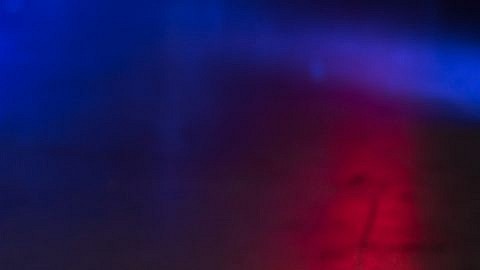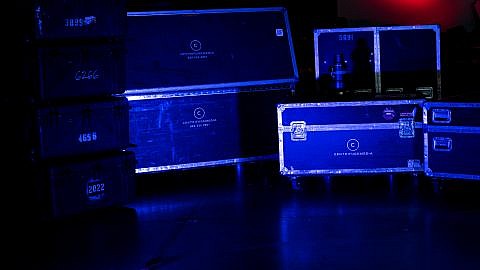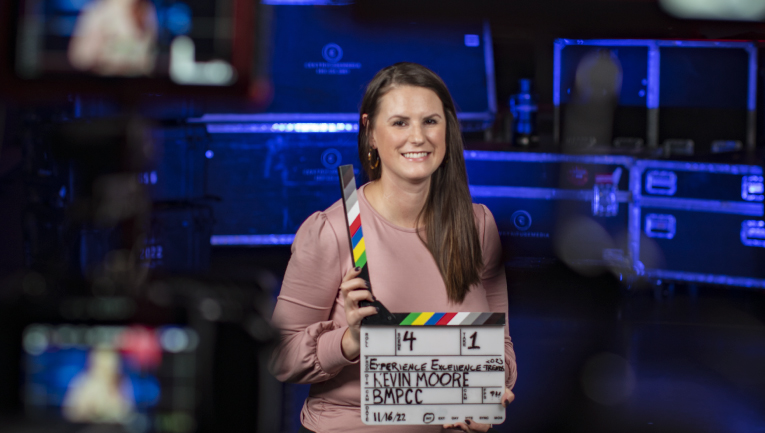“Didactic lectures are not the future. They are the past. And coming out of COVID, being behind a screen and isolated, it's important for people to have hands-on experiences, and face-to-face conversations.”

Q: WHAT IS AN EXPERIENTIAL LEARNING SPACE AND HOW DOES THIS TYPE OF LEARNING TAKE AN EVENT TO NEW HEIGHTS?
A: An experiential learning space is a different type of workshop than we’ve typically seen before. It’s not the standard everybody sits at a table and looks at slides. It’s more immersing yourself in the environment, connecting with the content, and the people you’re talking to. People are coming out of virtual and learning has primarily just been on a computer. We’re seeing people want to get their hands on the content and talk face-to-face with physicians and patients. We’re seeing this trend highly for the new way of learning coming out of the COVID pandemic.
Q: WHAT EXPERIENTIAL LEARNING SPACES ARE MOST MEMORABLE TO YOU?
A: The most memorable experiential learning workshops we’ve done in the past is where we highlight the patient’s story. We’ll interview the patient, learn about their life, what their disease state is, and how it personally impacts them. Then, we will create the environment. Honestly, the one that’s been most impactful was when we highlighted an epilepsy patient. She was a child suffering from epilepsy since birth and her parents were really struggling. We created this immersive pediatric camp for kids with epilepsy. We wanted to make it feel like you were walking into a camp cafeteria. Crumbs on the floor, snacks, games, movies, pictures, colors, and crafts. It was honestly a sensory overload because you’re walking and you’re like, “oh my gosh, this is so much” but when you sit down at the picnic table and you hear this little girl talk about her experience with epilepsy, and how she was able to go to the summer camp, you honestly get chills thinking about it because her life was so hugely impacted by this place that catered to children with special needs. That was the most memorable experience for me. We were able to bring her to the forefront and highlight the positive things in her life.
Q: WHY DO YOU ENCOURAGE CLIENTS TO INCORPORATE THIS TYPE OF ENGAGEMENT AT AN EVENT?
A: If you’re thinking about the overall longevity of the meeting, about this theme being a campaign, and this patient’s story resonating with people when they go back into the field or the office. Having something that emotionally connects them, where they feel like they walked a day in the patient’s life.”
If they are thinking about that person and feel like this really could be me or this could be my child, sister, or brother, I think it’s just going to resonate with them that much longer and really carry through that whole message on a more personal and impactful level.
Q: WHAT DOES IT TAKE FOR THE CENTRIFUGE MEDIA TEAM TO SUCCESSFULLY PUT TOGETHER AN EXPERIENTIAL LEARNING EXPERIENCE?
A: Planning and being connected with the internal stakeholders is hugely important for this. We want to get it right. We want to make the impact that it really needs to. Talking about the space in advance, we can create small spaces out of the ballrooms, guest rooms, or a breakout rooms. Having advanced planning of what the space is going to look like is crucial.
Another thing is for our team to really talk to the patient and understand their story. It is all about the details when we do these experiential learnings, specifically the patient story, down to the goldfish on the picnic table. Having a full understanding of the patient and their story will help us pull in all those details and play on the senses. Not just seeing something but sitting in the space and the smells, sights, sounds, and taste. Everything that goes into feeling like you are part of this person’s life. It’s just having those conversations in advance and being able to connect with that person to execute the room we want to create for the audience.
Q: WHEN IT COMES TO A HANDS-ON EXPERIENCE OR A SPACE THAT USES ALL SENSES HOW DOES THIS CARRY A MESSAGE IN THE MOMENT AND LONG AFTER AN EVENT?
A: Another memorable patient experience that we produced was for a Parkinson’s patient who started experiencing his first tremors at Thanksgiving dinner. So, we took a guest room, and we took all the furniture out of it, and we made it look like this person’s family’s dining room table. We had the to the table, obviously, the chairs, all the different foods you’d have at Thanksgiving dinner, wine glasses, we had pumpkin spice smells in the background. We had water running because this patient specifically started experiencing tremors when he was washing the dishes. And so he started noticing this is a trend that I’m seeing. And then as he’s passing the cranberry sauce, he sees it again. And so, he’s talking to his family, “I think I need to go see a neurologist.” But everyone has experienced a Thanksgiving dinner or a meal of some kind. So, when you think about it on that level, I’ve been there, I’ve done dishes, I’ve passed the cranberry sauce, you know, this could be me, this could be my father. That’s just really, really memorable. And when you play on the senses of you’re hearing the dishwater, you’re smelling the pumpkin spice, you’re potentially eating the turkey and watching this person tell about how this particular moment in time changed their life. That helps add to the experience. Again, you’re not just sitting in a room watching a video. You are immersed in this person’s life, and you are thinking about how that could impact you on a personal level.
Q: WHAT ARE THE KEY TAKE-AWAYS FROM A PHYSICAL LEARNING ENVIRONMENT YOU WANT THE AUDIENCE TO GAIN?
A: When you’re doing these types of workshops, you’re going to remember that you were hands-on with the content. You’re sitting there having a conversation with the physician. You’re not just seeing slides from the back of the room. You’re able to touch it, to feel it, to write on it, to workshop, to network, to role play, to see how other people might present the information.
And so having those experiences where you’re able to do it face to face and learn from your colleagues and your mentors. That content’s going to stick with you as opposed to a didactic lecture where you’re given the information and now you go out. You know you are part of the content at that point. And I think that type of learning style, especially for adults, is really going to be key as they go out and execute the messages that they learned at the meeting.
Q: WHAT ARE YOUR PREDICTIONS FOR THE USE OF EXPERIENTIAL LEARNING IN 2023?
A: I really hope that meeting planning teams and internal stakeholders understand the value that this brings. There is a bit more cost associated with bringing in all these props. There’s more planning time that’s needed leading into this special experience. There’s a lot more coordination with the hotels to get earlier access to make sure we can load in and handle all those logistics. But I think if people realize the impact that it has on the attendee and realize that the content is going to stick with them that much longer, that they really start focusing on this new way of learning. Again, didactic lectures are not the future. They are the past. And coming out of COVID, being behind a screen and isolated, it’s important for people to have those hands-on experiences, those face-to-face conversations. And I think that is how the adult learner learns best.


